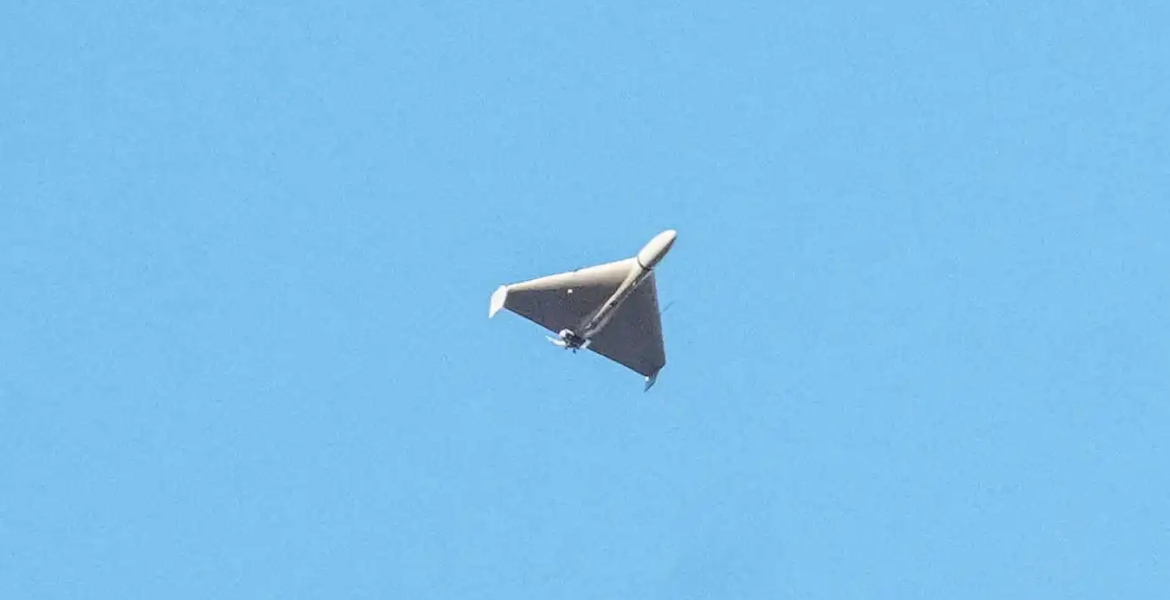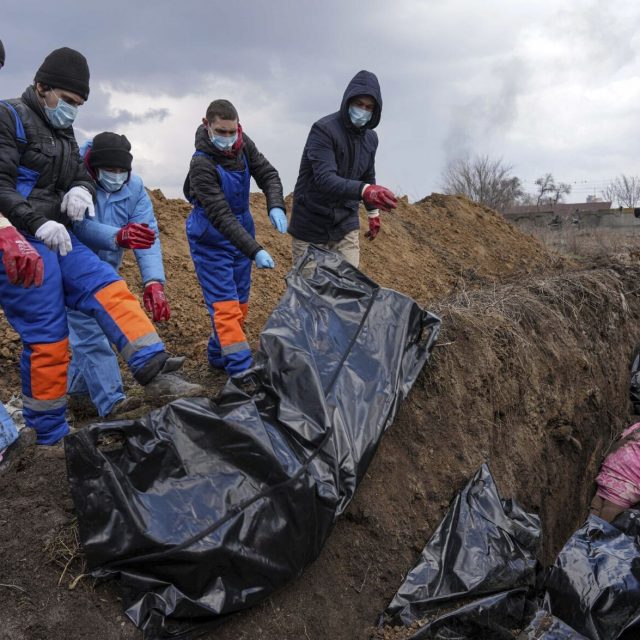Should Iran’s alliance with Russia be a cause for concern? Relations between Iran and Russia began to improve rapidly after 24 February, and in late March Sergey Lavrov said that the government of the two countries would look for ways to circumvent Western sanctions. Iranian exports to Russia increased by 70% from March to October and total trade by 40%, but the main trump card of the new format of relations between the Kremlin and Tehran has become military and industrial cooperation.
As early as 12 April, the Guardian reported that Russia was receiving smuggled weapons for the war in Ukraine from Iran via Iraq.
The first signal that Iran was indeed providing military support to Russia and thus de facto participating in the war was the White House’s announcement in early July that Iran was planning to transfer hundreds of combat UAVs to Russia.
The Pentagon even received intelligence that on 15 July, Russian commissioners were inspecting drones that could be sold for the war with Ukraine.
At the end of July, the international media began to write about the fact that drones had been sold and that they were already with the Russian army, as well as about Iranian instructors sent to Russian military bases to train UAV operators.
The situation was consistent with the fact that at the beginning of the summer Russia felt an acute shortage of its own UAVs, which, moreover, are inferior in many ways to the Western models used by the Armed Forces, and the appeal to Iran to help did not take long. For Russia, there were simply no other options, Iran and China, even though they tacitly support Russia, understand that any attempt to transfer relations to the level of arms trade to maintain air defense will sooner or later lead to long-term reputational and sanctions risks, which will not pay off with military support for the rogue country.
Iranian-made drones have performed well in Yemen, Lebanon, Syria, and Iraq. For the Islamic Republic of Iran itself, the prospect of strengthening the U.S. position in the Middle East, and losing a nuclear ally in the Russian-Ukrainian war, looked extremely depressing.
In the end, Putin faced two choices as to who to turn to for help in resolving the problem of Russia’s equipment deficit: North Korea or Iran. At the same time it was very important for Russia to keep this information behind closed doors, which of course did not work out in the end. But the very fact that Russia asked for help in what should be advanced and in excessive numbers based on previous Kremlin rhetoric dealt a serious blow to the reputation of Putin and his entourage.
Information about the first use of Shahed-136 kamikaze drones in Ukraine appeared in late August. In September, Ukrainian army forces shot down the first Shahed-136 drone near Kupyansk, Kharkiv region, and immediately noticed the marking “Geran-2” on the wreckage. A total of dozens of such drones were shot down in a month, with attacks carried out in Kyiv, Odessa, Mykolaiv, and Dnipropetrovsk regions. The main targets for the drones were civilian infrastructure, but residential buildings and people were also affected.
To this day, Iran officially denies supplying UAVs to Russia, despite direct evidence gathered by Ukraine and intelligence from Western countries. NATO Secretary General Jens Stoltenberg said the day before that Iran had sold drones, and the EU Council imposed sanctions on three Iranian citizens and one company. Canada also imposed additional sanctions, the third time in a month, and the United Kingdom and the United States said they were preparing sanctions.
What probably matters to Iran is not the fact that military drones are sold to an aggressor country that will use them for war in Ukraine, but that this sale is possible if the seller in his conviction gives the goods to improve the defence complex of a strategic partner, rather than for destruction of a neighbouring state. How it will actually be, of course, the side of the deal does not care.
Iran’s alliance with Russia is important, on the one hand, to demonstrate the presence of a nuclear power in the person of an ally, and, on the other hand, to retain power and influence in the Middle East. For the radical wing of the Islamic People’s Republic, the Russian-Ukrainian war is just a mechanism for countering the West and the United States. Iran, by its actions, openly declares “that Tehran’s weapons can compete with those of the United States.”
Consolidation of the foreign policy and strategic partnership of the two states against the US is logically explained by the fact that for Iran and Russia a democratic world and its values mean the end of power. The two states share first and second place in the number of sanctions imposed. Iran has been on the list of countries sponsoring terrorism for decades, and Russia has reserved a place on this list by launching its invasion of Ukraine on 24 February.
Iran has been living under U.S. sanctions since the 1980s. For Russia, such experience in the current situation is invaluable, especially if they are willing to share it. Iran has managed to restructure its economy to the new realities, where the country has to do without the international payment system SWIFT, as well as look for new ways to buy goods through intermediaries.
Russia has been cooperating with Iran for a long time. For example, Russia has completed the first nuclear power plant in Iran in the city of Bushehr. Construction work began in 1997, and the Bushehr NPP itself was launched in 2011. On November 11, 2014, Russia and Iran signed an agreement to build two new power units, with the second unit scheduled to be completed in 2024 and the third unit in 2026.
The possibility to turn to Iran to replenish the rapidly exhausting stocks of their own military-industrial complex has become a kind of lifeline for the Kremlin. The only difference between the DPRK and Iran is that the latter wants to sit on two chairs, having an interest in returning the U.S. signature to the 2015 nuclear agreement and thus getting hundreds of billions from this deal. For Iran, in turn, the fact of Russia’s request for help is a great signal to the world society about Tehran’s military potential, as Ayatollah Khamenei himself did not refrain from boasting on 19 October, saying “When photos of Iranian drones were published several years ago, words were heard that it was a photomontage. Now these drones are being called formidable.” The ayatollah’s comment potentially worsens Iran’s position in trying to resolve the scandal surrounding the sale of Shahed 136 drones to Russia, and completely overrides any earlier statements by the Foreign Ministry that the state was not involved.
The 2015 agreement (the Joint Comprehensive Plan of Action) between Iran, the five permanent members of the UN Security Council (US, China, Russia, UK, France), and Germany was to lift some Western sanctions (mainly the oil embargo), in exchange for Iran’s agreement to export the bulk of its enriched uranium, while keeping its stockpile of 300 kilograms under constant surveillance by cameras and international inspectors, mainly the IAEA, as well as restrictions on enrichment to 3.67% purity and the operation of advanced centrifuges needed for enrichment.
UN Resolution 2231 became part of the Iran deal in 2015. According to it, restrictions on Iran’s purchase or sale of advanced weapon systems, including drones, were to remain in effect until 2023. In other words, Iran directly violated the UN Resolution by starting to sell its drones to Russia, as France, the US and the UK (members of the UNSC) have already officially stated.
In 2018, President Trump unilaterally withdrew the U.S. from the agreement, based on Israeli intelligence that Iran was secretly enriching uranium and planning to build nuclear weapons. In response to Trump’s decision, Iran began to violate its commitments.
The next 11 months saw numerous talks between Iran and the U.S., through EU mediation, and new drafts of the agreement from the EU were sent to Tehran for review.
Notably, for the EU, a nuclear agreement with Iran was always the desired outcome of the situation, which is why the EU directly put the lion’s share of effort into maintaining the U.S.-Iran dialogue after Trump’s decision in 2018. In September of that year, in response to the U.S. President’s decision, participants in the nuclear deal (Britain, China, France, Germany, and Russia) agreed to create a mechanism to circumvent U.S. sanctions in order to continue trade and monetary settlements with Iran.
Regarding the new projects on the nuclear deal, Iran has even made concessions on some points, for example, they no longer insist that the U.S. remove the Iranian Revolutionary Guard Corps from its official list of foreign terrorist organizations. Second, Iran is no longer demanding guarantees that a future U.S. president will not renege on the deal, as Trump did in 2018. That said, the main stumbling block remains the issue of the IAEA investigation. Iran has demanded that the IAEA stop investigating the origin of the radioactive traces found at three of its sites, a position that remains unchanged for Tehran.
In any case, the only option for Iran to resume the 2015 agreement was by waiving any demands. Tehran realized this closer to mid-summer, when Putin visited Iran. Prior to that, Tehran had taken a position of neutrality on the war in Ukraine, somewhat similar to that of China and India. On July 19, during Putin’s visit, Iran’s supreme leader Ali Khamenei did refer to the Kremlin’s actions against Ukraine as “preventive” measures, making it clear that his country generally supported Russia.
The decision to side with Russia, an international pariah, indicates that Iran has closed the door to improved relations with the West and the US, at least for several years. There is a good chance that Russia has promised Iran something that completely overrides the risks and consequences of the rapprochement between the two states. It is likely that this may be about technology, particularly military technology, to which Iran has had limited access for decades, such as military aviation technology.
It should be noted that Israel, the main U.S. ally in the Middle East, has always opposed lifting sanctions on Iran, as has Saudi Arabia, whose conflict with Tehran has historical roots. There are many reasons to believe that after the lifting of sanctions and the restart of the nuclear agreement, Tehran will not give up its ambitions to sponsor international terrorism and violate its commitments, but it will have many times more opportunities and money to do so.
For Russia, the lifting of sanctions on Iran raises many concerns. First of all, the two states are among the top ten in terms of oil reserves, and Iran’s entry into the international oil market, would create an unnecessary competitive environment for the Kremlin, which is more against Putin’s interests than ever. Russia’s situation after 8 months of SWO does not dictate the possibility of sharing financial flows with anyone else. Oil and gas remain the main sponsors of Russia’s aggression against Ukraine.
Was the plan of Iran and Russia really to repaint the name of the UAV from “Shahed 136” to “Geran”? Or maybe the logic was that Iran sold these UAVs to Russia with the implication of not using them as part of the EWS, but what the buyer will do next is, as they say, not my area of responsibility. This option is unlikely, because a delegation and instructors from the Islamic Revolutionary Guard Corps came to Crimea to train the Russians to work with the new “toys.”
One thing remains unchanged, the Iranian government is lying, and you always pay double for quick and bloody money. The evidence base is there, and there is enough to satisfy any court and international public inquiry. Over the past month and a half, Russia has attacked numerous Ukrainian cities with Iranian-made Shahed 136 drones. In addition to critical infrastructure, residential buildings have also been hit, with many casualties. If you sell a knife to a murderer, while knowing where he uses your product and how, you simply become an accomplice to murder. This principle should not be lost behind the curtains of world politics, it should be applied to individual state actors as well as to states as a whole. Sponsoring terrorism in any form is an act of aggression, and the longer the eyes are closed and the hands of world society are tied, the more terrorism and those willing to commit it will be.
What happened on Monday 17 October, permanently put an end to Iran’s desire to abstract itself from the war in Ukraine. Not only Russia, but also the Iranian government, whose Shahed 136 drones caused the deaths of Ukrainian civilians, will have to answer for the death of a woman six months pregnant. Iranian political circles have been working on the official version and the government’s position on the sale of the drones for more than a week, and they understand that they cannot continue the rhetoric “We did not sell anything”, while they are forcing the cheap excuse “We did not sell drones to Russia for use in the air defense system”.
There are also fears that Iran is going to sell Russia ground-to-ground ballistic missiles Fateh-110 and Zolfaghar, which according to Iran’s own version does not correspond to the truth. In any case, the desire to please the Kremlin in military matters where the Islamic Republic has certainly succeeded, with the supply of UAVs of various types and ballistic missiles, will only grow. The media also wrote about the training of Russian operators to operate Arash-2 UAVs, which Iran decided to sell to Russia after all. Earlier, this information was denied by Iranian officials, arguing that “if Russia uses this drone in Ukraine, the Americans can get access to our technology”.
One thing is important, if we are building a democratic world where Russia poses a threat to its values, we cannot ignore the Islamic Republic of Iran, which has long chosen an axis of evil over good. And any strengthening of the alliance of evil, will cause it to multiply and increase the number of human casualties.




